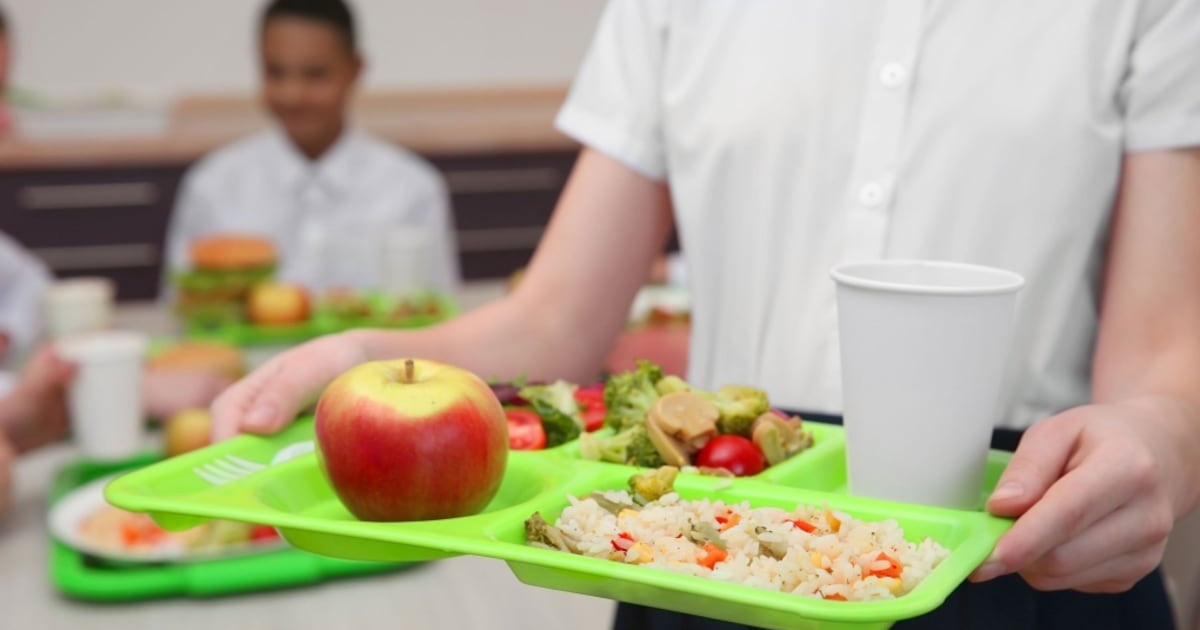Health
Parents Demand Teachers Stay Out of Children’s Lunch Choices

As the new school year begins, a growing debate in Canada centers on the role of teachers in monitoring children’s lunch choices. Parents argue that food preferences should remain a family matter, reflecting individual health needs, cultural backgrounds, and financial situations. The discussion highlights the complexities surrounding nutrition education and the potential consequences of food shaming in schools.
One poignant voice in this conversation comes from Erin, a single mother from Sherwood Park, Alberta, who has recently completed treatment for breast cancer. With limited energy and financial resources, she emphasizes that for many parents, the priority is simply ensuring their children are fed, regardless of the nutritional value of the meal. “No parent is making a child’s lunch with the intention of it not being good. They just want calories in,” she stated in an email to CTVNews.ca.
Her situation illustrates a broader issue as educators seek to promote healthy eating habits while some parents stress that their children’s dietary needs often extend beyond typical nutritional guidelines.
Balancing Nutrition and Individual Needs
The challenges faced by parents are varied and complex, particularly for those with children who have specific medical or sensory needs. Laura Grond, a parent from Hamilton, Ontario, has an autistic son who relies on a limited diet that includes processed foods to ensure adequate calorie intake. She argues that while teachers may view these choices as unhealthy, they are vital for her child’s growth. “There are ways to educate students about nutrition without shaming them for what is in their lunch box,” Grond explained.
Similarly, Stephanie Frey from Humboldt, Saskatchewan, shared her experience with her eight-year-old son who has ADHD. She notes that his medication suppresses his appetite, making it crucial that he has access to foods that support his concentration and behavior. Instances of teachers sending home snacks deemed unhealthy have prompted Frey to seek a pediatrician’s note to ensure her son’s dietary needs are respected.
Child psychologist Angela Grace warns that food shaming can lead to deeper issues, including eating disorders. “When a teacher judges a child’s food, it sends the message that the kids can’t trust their parents,” Grace said. She advocates for a food-neutral approach that recognizes the diverse needs of students.
The Divide Among Educators
Opinions among teachers on this issue are sharply divided. Some educators, like Lynn Finley, an educational assistant in York Region, Ontario, believe that monitoring lunch contents is necessary to maintain classroom focus. “Allowing children to get hyped up on soft drinks, Gatorade, and candy disrupts their ability to sit still and focus on their studies,” Finley argues, highlighting the importance of moderation.
Conversely, retired teacher Richard Cunningham stresses that he never commented on students’ lunches, acknowledging the diverse backgrounds from which children come. “Students come from very diverse backgrounds, with some being new Canadians and others with limited means,” he noted.
Many educators, like early childhood educator Robbie Peever from Peterborough, Ontario, focus on ensuring that students have access to food rather than policing what they bring. “We encourage healthy snacks first… The bottom line for me is that they have food,” Peever stated.
A recent study by the University of Toronto highlights concerning nutrition trends among Canadian preschoolers, revealing that nearly half of their daily calories come from ultra-processed foods. The study indicates that one in five children were overweight or obese by age five, underscoring the urgency of addressing dietary issues in schools.
As inflation continues to rise, many families are struggling to afford healthier options. Statistics Canada reported a food inflation rate of 3.4 percent in August 2023, which has outpaced general inflation throughout the year. Janice Baxter from Orillia, Ontario, remarked that in such economic conditions, families may only afford inexpensive options like jam on bread.
Erin adds that the choices parents make for their children’s lunches are often dictated by financial constraints. “If families are accessing a food bank, you’re getting what you’re getting. So choice has become more limited,” she explained.
The conversation surrounding children’s nutrition in Canadian schools is complex, involving a delicate balance between promoting healthy habits and respecting individual family circumstances. As schools open their doors for another academic year, the stakes are high for parents, educators, and children alike, with the goal of ensuring every child is adequately nourished.
-

 Politics4 weeks ago
Politics4 weeks agoSecwepemc First Nation Seeks Aboriginal Title Over Kamloops Area
-

 World5 months ago
World5 months agoScientists Unearth Ancient Antarctic Ice to Unlock Climate Secrets
-

 Entertainment5 months ago
Entertainment5 months agoTrump and McCormick to Announce $70 Billion Energy Investments
-

 Science5 months ago
Science5 months agoFour Astronauts Return to Earth After International Space Station Mission
-

 Lifestyle5 months ago
Lifestyle5 months agoTransLink Launches Food Truck Program to Boost Revenue in Vancouver
-

 Technology3 months ago
Technology3 months agoApple Notes Enhances Functionality with Markdown Support in macOS 26
-

 Lifestyle3 months ago
Lifestyle3 months agoManitoba’s Burger Champion Shines Again Amid Dining Innovations
-

 Top Stories2 months ago
Top Stories2 months agoUrgent Update: Fatal Crash on Highway 99 Claims Life of Pitt Meadows Man
-

 Politics4 months ago
Politics4 months agoUkrainian Tennis Star Elina Svitolina Faces Death Threats Online
-

 Sports5 months ago
Sports5 months agoSearch Underway for Missing Hunter Amid Hokkaido Bear Emergency
-

 Politics5 months ago
Politics5 months agoCarney Engages First Nations Leaders at Development Law Summit
-

 Technology5 months ago
Technology5 months agoFrosthaven Launches Early Access on July 31, 2025


















